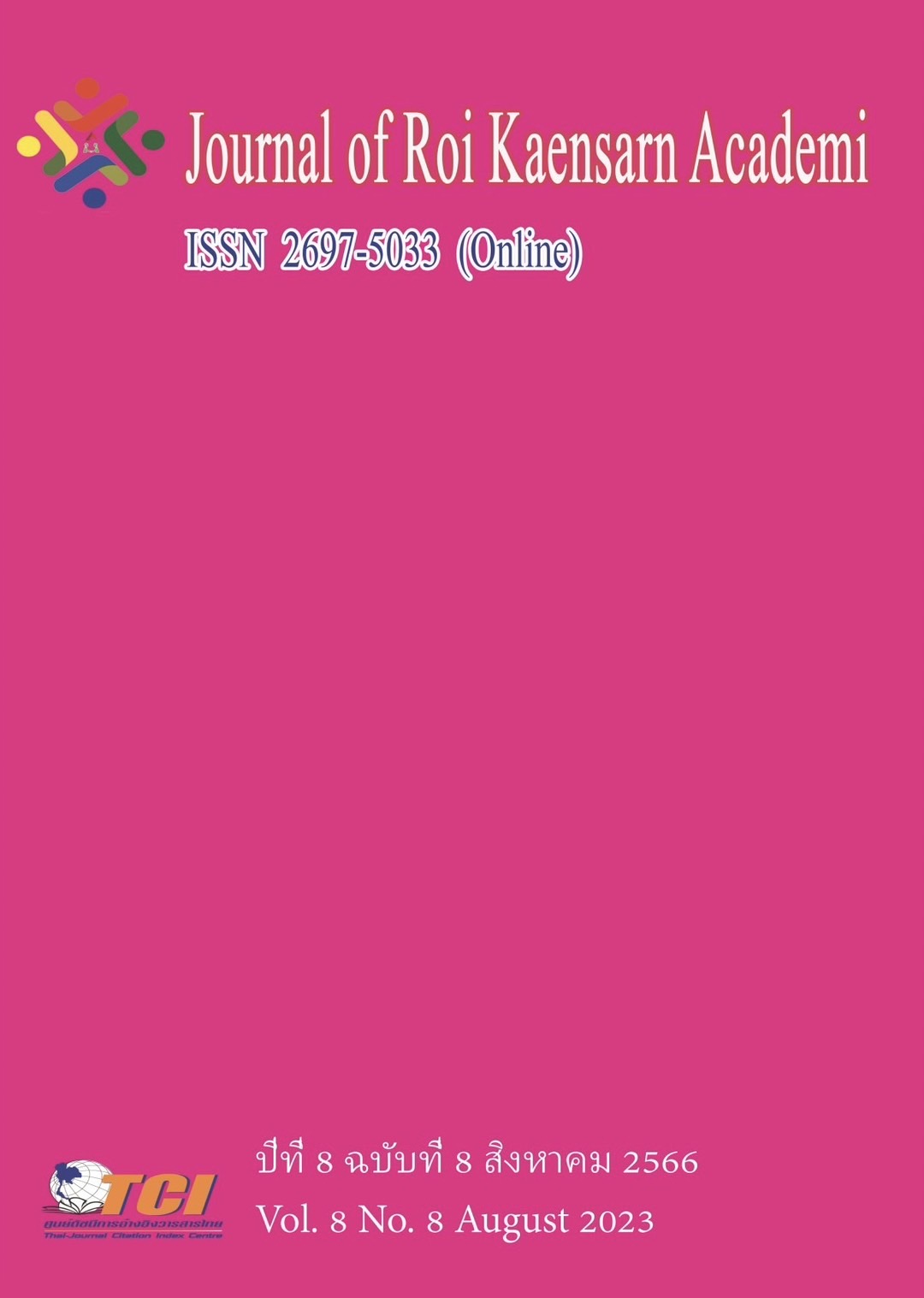An analysis of the performance style of the band “Chaozihui” in Fengning, Hebei Province, China
Main Article Content
บทคัดย่อ
The purpose of this study is to analyze the performance style of "Chaozihui" band in Fengning, Hebei, China, in order to understand the characteristics of its melody and rhythm. Qualitative research method was adopted in this study. Researchers visited Fengning County, Hebei Province to interview key informants and collect relevant data. Through ethnomusicology theory, music morphological analysis theory, music analysis theory and music and performance theory research theory. Through research, it is found that "Chaozihui" is composed of suona, leather gong, drum, cymbals and gong. Most Qupai are Manchu Qupai, which has been continuously enriched and improved in the spreading process, forming a set of folk instrumental music with obvious Manchu characteristics. Among them, blowing music and miscellaneous music are the two forms of "Chaozihui" performance. Through the analysis of the music, it is found that the melody of "Chaozihui" band has obvious tonality, and the rhythm is distinct and varied. It shows a strong sense of rhythm and musicality. This study provides a certain reference and enlightenment for the in-depth understanding of the performance style of "Chaozihui" band in Fengning, Hebei, China, and also makes a contribution to the protection and development of Chinese traditional music culture.
Article Details
เอกสารอ้างอิง
Chen, X. D. (1990). Overview of Fengning Manchu Autonomous County. Manchu Studies (02),5-6.
Liu, Y.B. (2019). On the driving, integration and development of folk percussion music "Chaozihui" from the perspective of Coordinated cultural development of Beijing, Tianjin and Hebei. Research on Communication Power (32),189-191.
Qiu, G. X. (2021). Validity of interdisciplinary research on musicological analysis -- A Case study of Liu Zhidan's revolutionary historical folk songs. Journal of Tianjin Conservatory of Music (03),26-37. doi:10.16274/j.cnki.cn12-1280/j.2021.03.003.
Sun, X. J.(2021). Exploring the Foundation of Music and Seeking the Equality of Dialogue --On the Construction of theoretical Discourse "Describing musical Morphology". Music Life (07),15-18.
Wang, D. (2022). The reference effect of ethnomusicology Research on the research and teaching of Chinese Music History. Art Review (23),78-82.
Wang, D. (2022). The reference effect of ethnomusicology Research on the research and teaching of Chinese Music History. Art Review (23),78-82.
Xue, Y. B., &WU, B.(1987). Investigation and study on the "concert" in Qujiaying. Musicology in China (02),81-96. doi:10.14113/j.cnki.cn11-1316/j.1987.02.022.
Zhang, Y. (2016). Analysis on the connotation of music culture used in folk rites and customs -- A case study of Gaobeidian Chaozihui. Exploration of Music (04),67-71. doi:10.15929/j.cnki.1004-2172.2016.04.012.
Zhao, S.F (2015). Review and Reflection on the research of Yao traditional music culture in China. Journal of Central Conservatory of Music (04), 87-94. doi:10.16504/j.cnki. cn11-1183/j.2015.04.010.
Zhao, X. (2022). Folk festival ceremony of "Chaozihui" music culture study. Live music (10), 44-46.
Zhao, S. X. (2022). Research on the music culture of "Chaozihui" in Folk festival Ceremony. Music Life (10),44-46.
Zuo, J. (2007). Refinement and Development of Folk music Elements -- Music Analysis of Gao Weijie's Impression on a White Horse. Music of China (04), 210-214.

